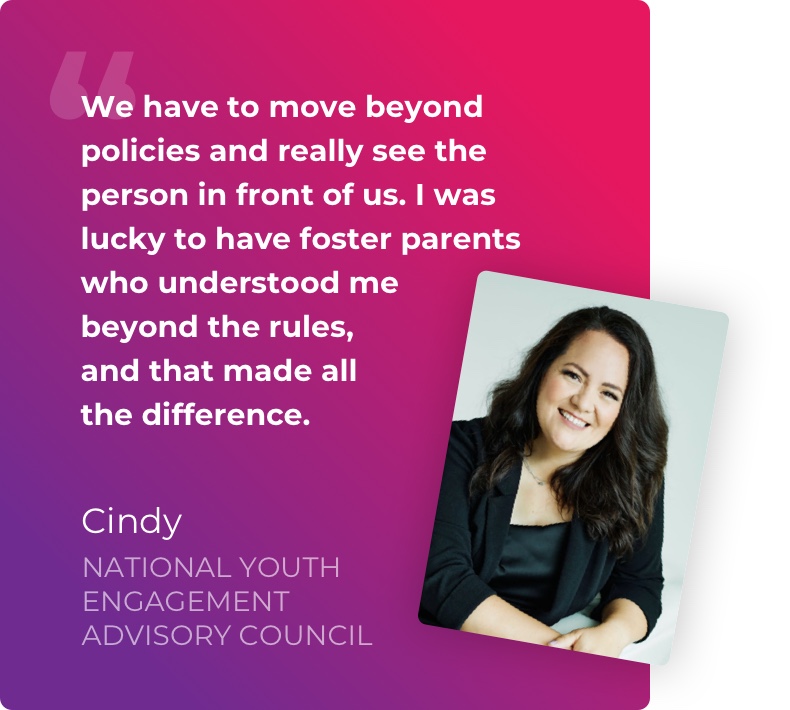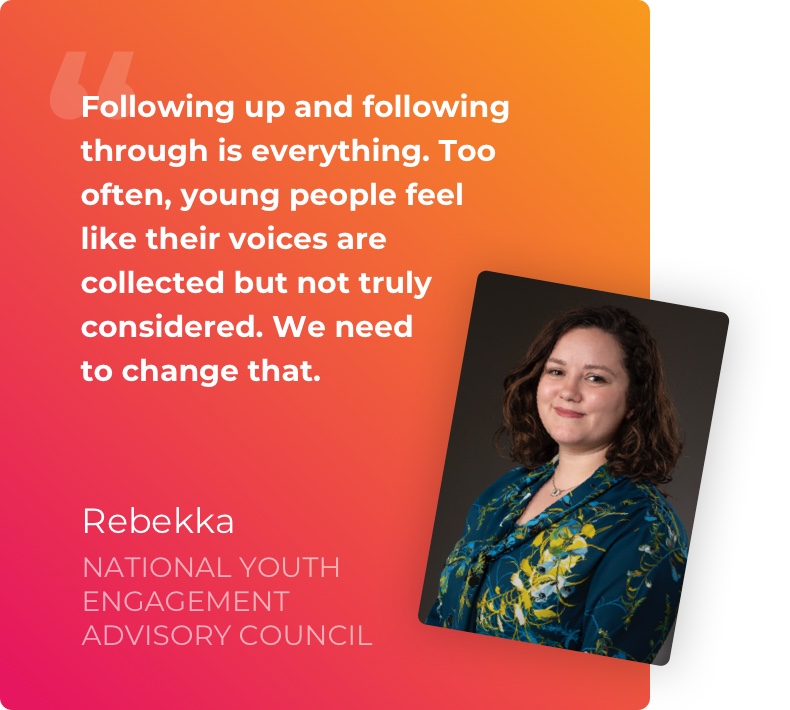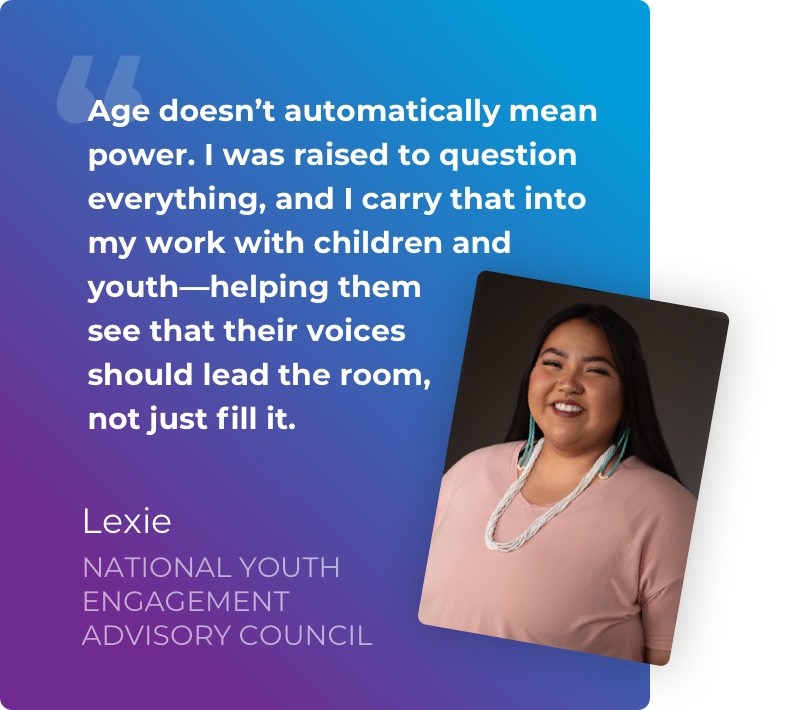Intentional collaboration with children and youth as a daily practice, even when it may be uncomfortable or feel impossible, creates opportunities to build deeper trust and open the door for true shared decision-making.
The Quality Improvement Center on Engaging Youth in Finding Permanency (QIC-EY) is producing a series of Lessons Learned to share fundamental insights about engagement of children and youth, especially in relation to permanency decisions. Each lesson brings to life insights and knowledge gained as the QIC-EY project progresses.
The Lesson
Intentional collaboration with children and youth as a daily practice, even when it may be uncomfortable or feel impossible, creates opportunities to build deeper trust and open the door for true shared decision-making.
When leaders expect and encourage moving beyond seeing children and youth as passive participants, the work becomes more collaborative, more effective, and, ultimately, more human. This shift doesn’t require professionals to have all the answers. Instead, it asks for something much simpler, yet more transformational: a willingness to listen deeply, to create space for children and youth to shape decisions. This is not about professionals giving up authority or power—it’s about making room at the table, inviting children and youth to sit alongside professionals.
Application of the Lesson
Despite growing recognition of the importance of engaging children and youth so they can be part of the decision-making process, many systems still operate in ways that limit their meaningful participation. Adult-centered decision-making—where professionals are the dominant voice—can make it difficult for children and youth to fully engage as partners.
First and foremost, to facilitate a change in the existing dynamics, leaders must make space for professionals to share concerns about engaging in shared decision making. This is true whether it is simply to voice a struggle with changing the norm or to express concern about the heaviness of accountability. Ultimately to make change, professionals must feel safe to do so. Here are several key points with practical examples to help leaders support a culture of shared decision-making between professionals and children and youth.
1. Invite children and youth into decisions as co-creators because decisions are stronger and more sustainable when shaped together.
- Approach conversations with curiosity, making space for children and youth to express what matters most.
- Instead of presenting pre-set options, start with open-ended questions and build solutions collaboratively.
Example: When working on a transition plan, encourage workers ask,“What does success look like to you?” to instead of outlining a predetermined path. Doing this will set the tone for co-creation of the plan together.
2. Trust in the strength and wisdom of children and youth.
- Reflect on what might be barriers to believing in the strength and wisdom of children and youth.
- Recognize that their lived experiences give them insight that we, as professionals, may not have.
- Look for moments to step back and let children and youth take the lead in discussions and decisions that impact them.
Example: In a discussion, reinforce their expertise by affirming their perspectives: “That’s an important point I hadn’t considered.”
3. Build relationships that make engagement meaningful and help build trust through consistency and genuine connection with children and youth.
- Go beyond procedural conversations—get to know children and youth beyond the decisions at hand and embrace the things that are meaningful to them.
- Small, thoughtful actions—like remembering personal details, being curious about their culture, and following up on past conversations—demonstrate that they are valued.
- Create an environment where children and youth are encouraged to challenge how things are being done.
Example: Create a culture that sets the expectation that workers are checking in regularly with children and youth, not just about their case plan, but about their interests, school, and who they are as a person.
4. Follow through to show that the voices of children and youth matter and that listening can lead to action.
- Ensure that the input of children and youth isn’t just collected—it’s used.
- If a decision can’t be made as they hoped, be transparent about why and explore alternative solutions together.
- Keep children and youth informed about progress so they see how their voices influence outcomes.
Example: A child or youth raises concerns about something affecting them. Even if immediate change isn’t possible, you keep them updated on progress and next steps.
At its core, shared decision-making is about trust—not just in the transactional elements, but in people. When we embrace the wisdom, strength, and leadership of children and youth, the work becomes lighter, relationships become stronger, and the outcomes become more meaningful. This is not just a shift in practice—it is a shift toward a more hopeful, collaborative, and human way for making decisions with children and youth rather than for children and youth.
For more insights on engaging with children and youth in authentic ways, check out additional QIC-EY Lessons on best practices for relationship-building and children and youth empowerment in child welfare.




